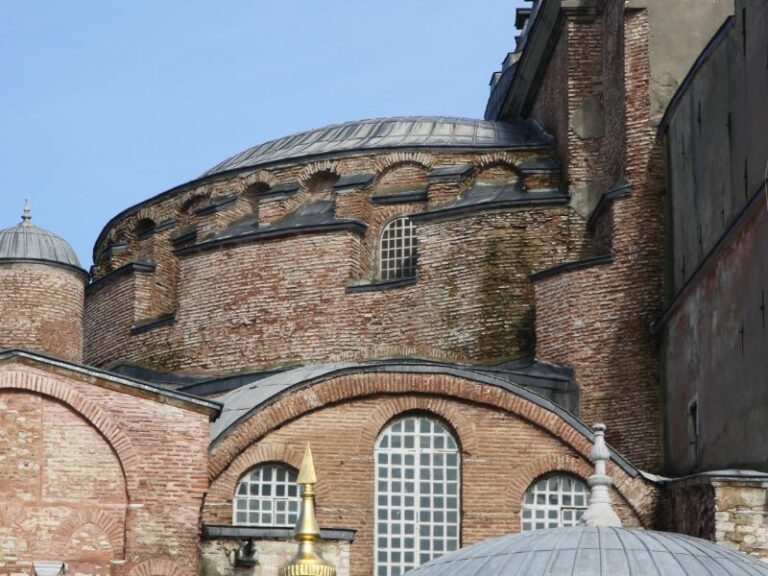Introduction
Ephesus, an ancient city located in modern-day Turkey, stands as a testament to the grandeur and artistic brilliance of past civilizations. Mosaic floors and frescoes in Ephesus provide an unparalleled glimpse into the intricate aesthetic and cultural achievements of ancient times.
These artistic marvels not only showcase the craftsmanship and creativity of their creators but also provide invaluable insights into the social, political, and religious milieu of the era.
This exploration delves into the intricate beauty and historical significance of the mosaic floors and frescoes in Ephesus that adorn this fascinating archaeological site, revealing the stories and traditions preserved within its vibrant designs.
Historical Insight
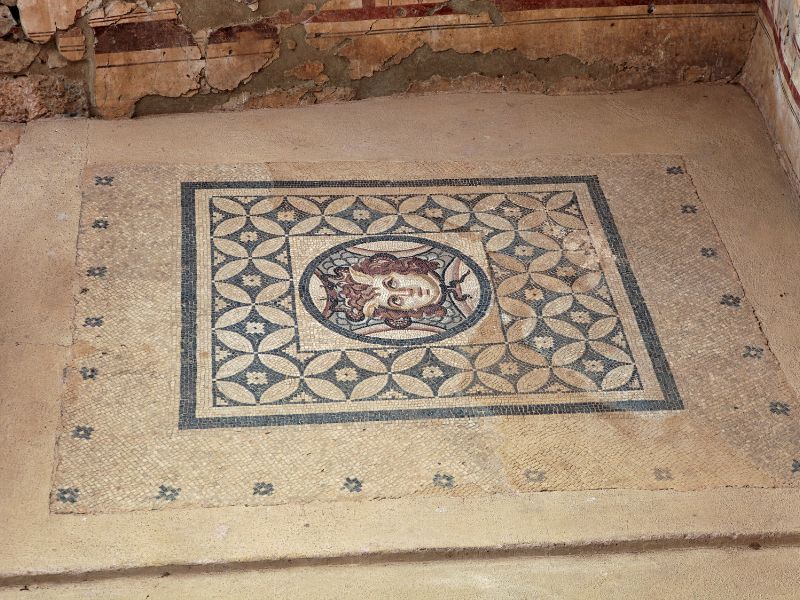
Understanding the mosaic floors and frescoes of Ephesus necessitates a journey through the city’s illustrious past. Ephesus flourished during various historical periods, each leaving a distinct mark on its architecture and art.
The city’s prominence grew significantly after Alexander the Great’s conquest in 334 BCE, and it continued to thrive under Roman rule. However, Ephesus faced several challenges, including earthquakes and invasions, which shaped its development and the preservation of its artistic treasures.
Mosaic floors and frescoes in Ephesus
The History of Mosaic Floors and Frescoes in Ephesus
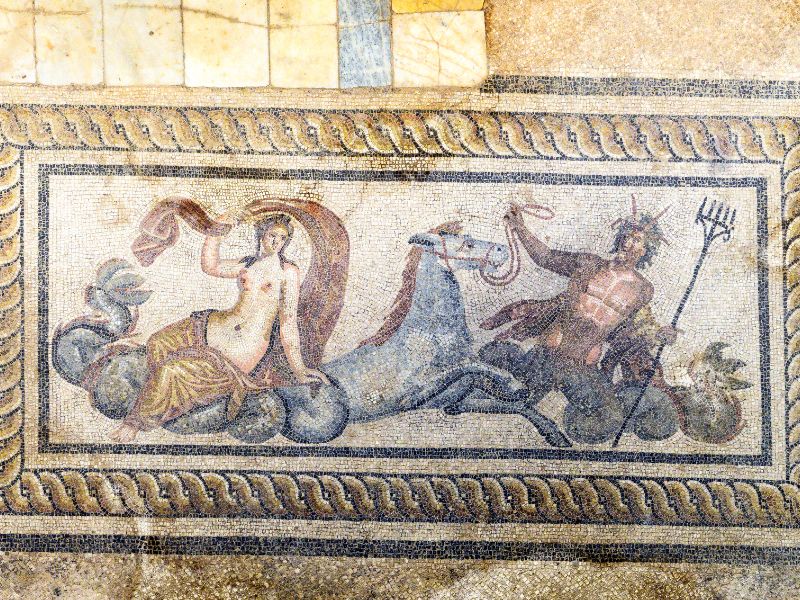
Dated back to the Ancient Greek and Roman periods, mosaic art stands as one of the oldest, most durable, and eye-catching forms of artistic expression. This art form spread from Rome across the Mediterranean and North Africa, eventually reaching Europe.
Following the fall of the Roman Empire, mosaic art further developed in regions such as Iran and the Byzantine Empire. The mosaic works of the Byzantine period reflected the antique world, continuing to evolve until the Renaissance.
However, after the Renaissance, the popularity of mosaics waned as paintings became the preferred medium. It was not until the 20th century that mosaic art experienced a resurgence alongside modern art movements.
The mosaics in Ephesus epitomize the refined style that characterized Roman art during its peak, blending Hellenistic influences with unique local elements. As the eastern capital of the Roman Empire, Ephesus boasted an array of exquisite mosaic artworks.
The influence of the various cultures under Roman rule, particularly the rich history and culture of Anatolia, added new dimensions to Roman mosaic art. Temples, roads, and homes were adorned with magnificent mosaics, showcasing both black-and-white geometric designs and colorful scenes inspired by mythology and daily life.
Common themes depicted in Ephesus’s mosaics include the lives of heroes and governors, mythological tales, wars, and hunting scenes. These artworks are renowned for their natural flow of color changes and excellent use of shading, which adds depth and vibrancy to each depiction.
Design and Architecture
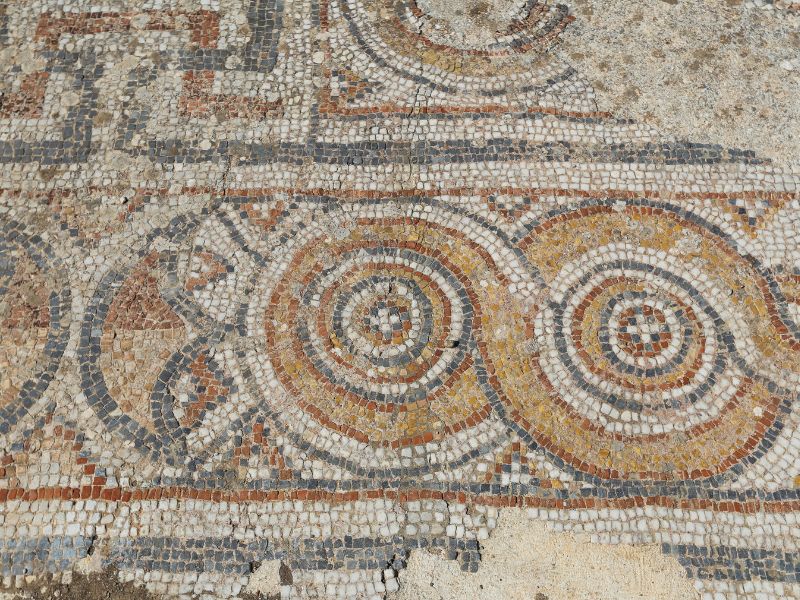
The mosaic floors and frescoes in Ephesus are celebrated for their intricate designs, vibrant colors, and symbolic significance. These artworks provide a window into the daily lives, cultural values, and artistic sensibilities of the ancient Ephesian elite.
Mosaic Floors in the Terrace Houses
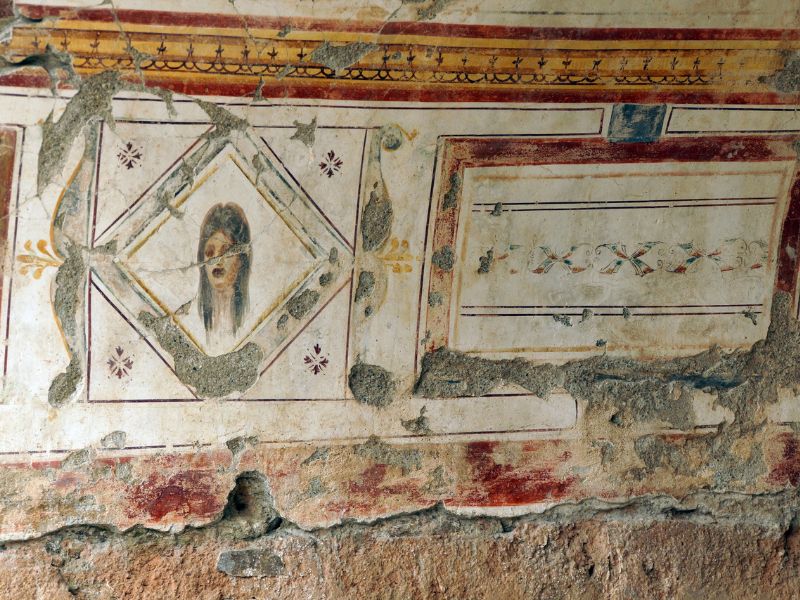
The Terrace Houses in Ephesus, also known as the “houses of the rich,” are renowned for their exquisite architecture and opulent decorations. Constructed between the first and third centuries CE, these multi-story residential units were home to Ephesus’s affluent and influential residents.
The houses featured beautifully crafted mosaic floors , showcasing the skill and creativity of ancient artisans. These mosaics, known as opus tessellatum, were made with small black, white, and colored squares typically measuring between 0.5 and 1.5 cm, and sometimes even as small as 1mm for fine details.
The materials included marble, tile, glass, smalto (glass paste), pottery, stone, and shells. The mosaics often depicted mythological scenes, geometric patterns, and elaborate floral motifs, adding aesthetic value and conveying cultural and religious symbolism.
For example, mosaics portraying Dionysus, the god of wine, symbolized abundance and celebration, while those depicting marine life reflected the city’s connection to the sea. Roman mosaics were a common feature in private homes and public buildings across the empire, from Africa to Antioch.
They not only served as beautiful works of art but also provided invaluable records of everyday items like clothes, food, tools, weapons, flora, and fauna.
Moreover, they revealed much about Roman activities such as gladiator contests, sports, agriculture, and hunting. Sometimes, they even captured the Romans themselves in detailed and realistic portraits.
Frescoes in the Terrace Houses

In addition to mosaics, the walls of the Terrace Houses were adorned with intricate frescoes. These wall paintings, preserved remarkably well under layers of sediment, depicted a range of subjects, from mythological narratives to portraits of aristocratic life.
The frescoes were executed using vibrant pigments, which have been carefully restored to their original hues, allowing modern visitors to appreciate their splendor. One notable fresco depicts a striking scene from the Trojan War, showcasing the Ephesians’ reverence for Homeric epics.
Another fresco portrays a serene garden, complete with birds and flowers, highlighting the residents’ appreciation for nature and beauty. The frescoes, like the mosaics, offer a glimpse into the artistic and cultural richness of ancient Ephesus, providing an enduring legacy of its elite’s taste and lifestyle.
Where to Witness Ephesus’ Marvels
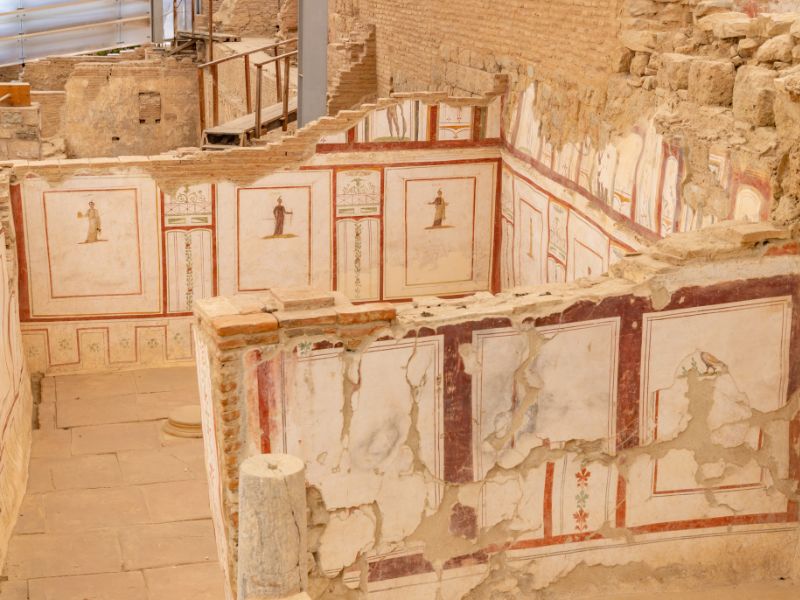
Visitors today can explore several key locations to witness the breathtaking mosaic floors and frescoes in Ephesus that have survived the test of time.
The Terrace Houses
Located on the slopes of Bülbüldağı (Mount Koressos), the Terrace Houses offer a unique glimpse into the luxurious lifestyle of Ephesus’s elite. The houses are meticulously preserved, with walkways allowing visitors to observe the intricate mosaics and frescoes up close.
This site provides an unparalleled opportunity to step back in time and experience the grandeur of ancient Roman domestic architecture.
The Temple of Artemis
Although the Temple of Artemis now lies mostly in ruins, its historical significance and the remnants of its former glory continue to captivate visitors.
As one of the Seven Wonders of the Ancient World, the temple once boasted vast marble columns and elaborate sculptures. Today, the site offers insight into the religious and cultural life of ancient Ephesus.
The Celsus Library
Another iconic structure in Ephesus, the Celsus Library, is renowned for its striking façade and historical importance. While not as richly decorated with mosaics and frescoes as the Terrace Houses, the library’s architectural elegance and role as a center of learning make it a must-visit location for history enthusiasts.
The Great Theatre
The Great Theatre of Ephesus, with its impressive seating capacity and well-preserved structure, is an architectural marvel. Although primarily known for its performances and gatherings, the theatre’s design and construction reflect the engineering prowess of the ancient Romans.
Conclusion
Ephesus stands as a beacon of ancient Roman history, offering invaluable insights into the art, architecture, and daily life of its inhabitants. The mosaic floors and frescoes in Ephesus, particularly those in the Terrace Houses, serve as enduring testaments to the skill and creativity of ancient craftsmen.

